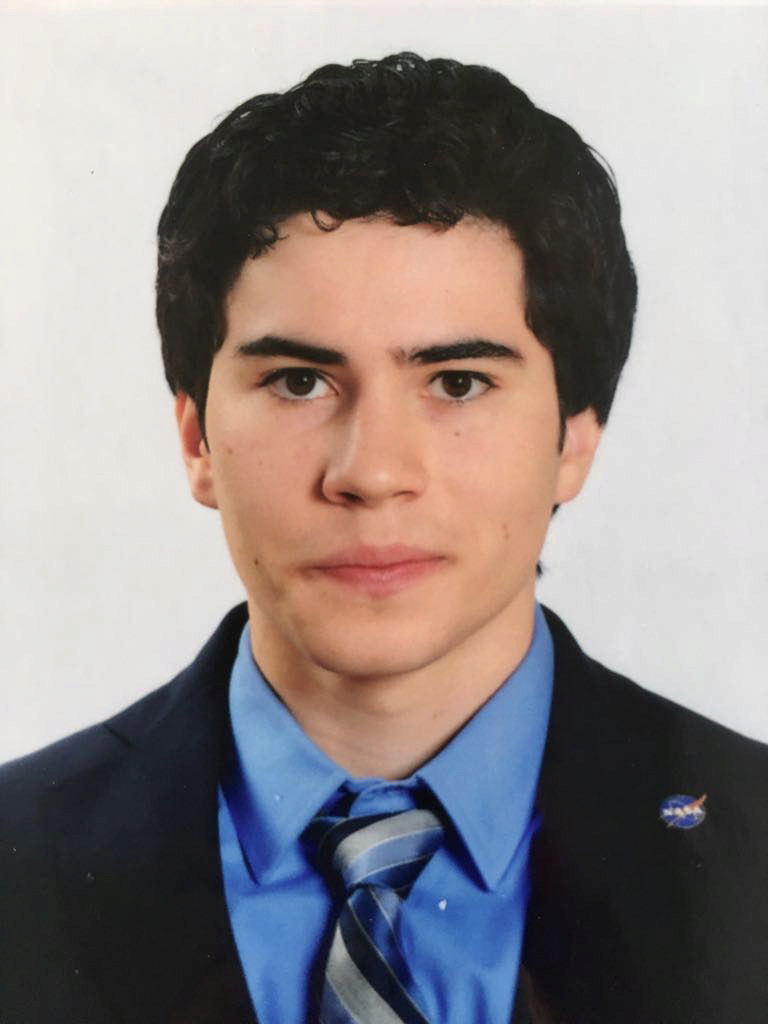 Team Effort from Full Circle. The students of Georgia Tech's multidisciplinary team, Full Circle, came together from their different schools and perspectives to create an award-winning submission to the Biomimicry Global Design Challenge. AE student Jose Andrade is second from the right.
Team Effort from Full Circle. The students of Georgia Tech's multidisciplinary team, Full Circle, came together from their different schools and perspectives to create an award-winning submission to the Biomimicry Global Design Challenge. AE student Jose Andrade is second from the right.
 A multidisciplinary team of Georgia Tech students is among the eight finalists in a global competition to create radically sustainable climate change solutions inspired by the natural world. Aerospace engineering student Jose Luis Rodriguez Andrade is part of that effort.
A multidisciplinary team of Georgia Tech students is among the eight finalists in a global competition to create radically sustainable climate change solutions inspired by the natural world. Aerospace engineering student Jose Luis Rodriguez Andrade is part of that effort.
Team Full Circle sought to create a more efficient way to generate power that was both low-cost and accessible to areas that are vulnerable to electricity shortage. They tackled the challenge by.creating an energy generator that produces clean renewable electricity from underwater sea currents. The design was informed by the bell-shaped body of jellyfish, how schools of fish position themselves, how heart valves move liquid, and how kelp blades are adapted to rapidly flowing water and maximize photosynthesis.
"I have always had a passion for nature and for the evolution around us that has given us ways to solve engineering problems," said Andrade, a native of Spain who just finished his first year at Georgia Tech.
"For this particular project, my contributions were in the area of fluid dynamics, which is of course a part of my studies in aerospace engineering."
More than 60 teams from 16 countries entered the Biomimicry Global Design Challenge, submitting nature-inspired inventions to reverse, mitigate, or adapt to climate change. Finalist teams like Team Full Circle received cash prizes and an invitation to the 2018-19 Biomimicry Launchpad, an accelerator that supports the path to commercialization and the potential to win the $100,000 Ray C. Anderson Foundation Ray of Hope Prize®. Read more about the finalists and their innovations here.
In addition to Andrade, Team Full Circle includes:
- Ananya Jain, research leader, School of Materials Science and Engineering (MSE)
- Kenji Bomar, School of Physics
- Heyinn Rho, School of Materials Science and Engineering (MSE)
- Anmbus Iqbal, School of Mechanical Engineering
- Sara Thomas Mathew, School of Mathematics
- Savannah Barry, School of Biological Sciences
”Nature’s blueprints are inspiring breakthroughs that change the way we think about innovation,” said John Lanier, executive director of the Ray C. Anderson Foundation, a major funder of the Challenge. “Reversing climate change means more than solar panels and wind turbines; it means reimagining everything, and after three years of working with teams in this Challenge, we are convinced biomimicry is the future of design.”
The Biomimicry Institute’s Biomimicry Global Design Challenge invites innovators to learn how to use biomimicry—the process of looking to nature for design inspiration—to develop solutions to climate change. Biomimicry is a proven method for creating breakthrough sustainable solutions, and nature offers us time-tested strategies that can be applied to climate change design issues in areas like energy, water, transportation, buildings and infrastructure, food systems, health, and more. The Challenge provides an opportunity to learn biomimicry by applying it in action to pressing environmental issues, and the chance to bring solutions closer to market in the Biomimicry Launchpad.
“I think we all remember being a kid, playing outside and discovering something amazing, like the way a roly poly pill bug contracts or how fireflies were the original twinkle lights,” said Beth Rattner, the Biomimicry Institute’s executive director. “Most of us thought, ‘One day, I’ll invent something that works like that.’ Most of us got sidetracked, but these teams followed that dream.”
The Ray of Hope Prize honors the legacy of Interface Founder Ray C. Anderson, who funded the Foundation upon his passing in 2011. Anderson was famously inspired by radical new approaches to centuries-old design and manufacturing techniques, and sought them out when rethinking his $1 billion global carpet tile company’s products and processes. The Ray C. Anderson Foundation has supported the Biomimicry Global Design Challenge since 2014. Each year, the Institute and Foundation award the $100,000 Ray of Hope Prize to the most viable prototype that embodies the radical sustainability principles of biomimicry.